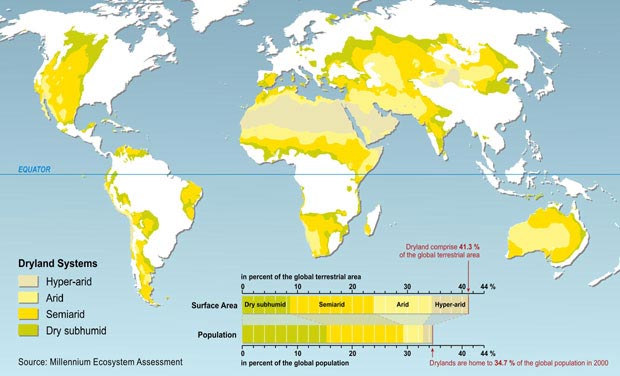


Appendix A: Present-day Drylands and Their CategoriesDrylands include all terrestrial regions where the production of crops, forage, wood and other ecosystem services are limited by water. Formally, the definition encompasses all lands where the climate is classified as dry subhumid, semiarid, arid or hyper-arid. This classification is based on Aridity Index values†.  †The long-term mean of the ratio of an area’s mean annual precipitation to its mean annual potential evapotranspiration is the Aridity Index (AI). Notes: The map is based on data from UNEP Geo Data Portal (http://geodata.grid.unep.ch/ Source:
MA
Related publication:
Other Figures & Tables on this publication: Figure 1.1. Schematic Description of Development Pathways in Drylands Figure 1.2. Land Uses in Drylands Figure 4.1. Key Desertification-related Findings of the MA Scenarios Appendix A: Present-day Drylands and Their Categories Box 7.1Droughts in the Sahel Region: Lessons Learned and Knowledge Gaps Figure 7.1. Overlap of Urban Areas with the Four Dryland Categories |